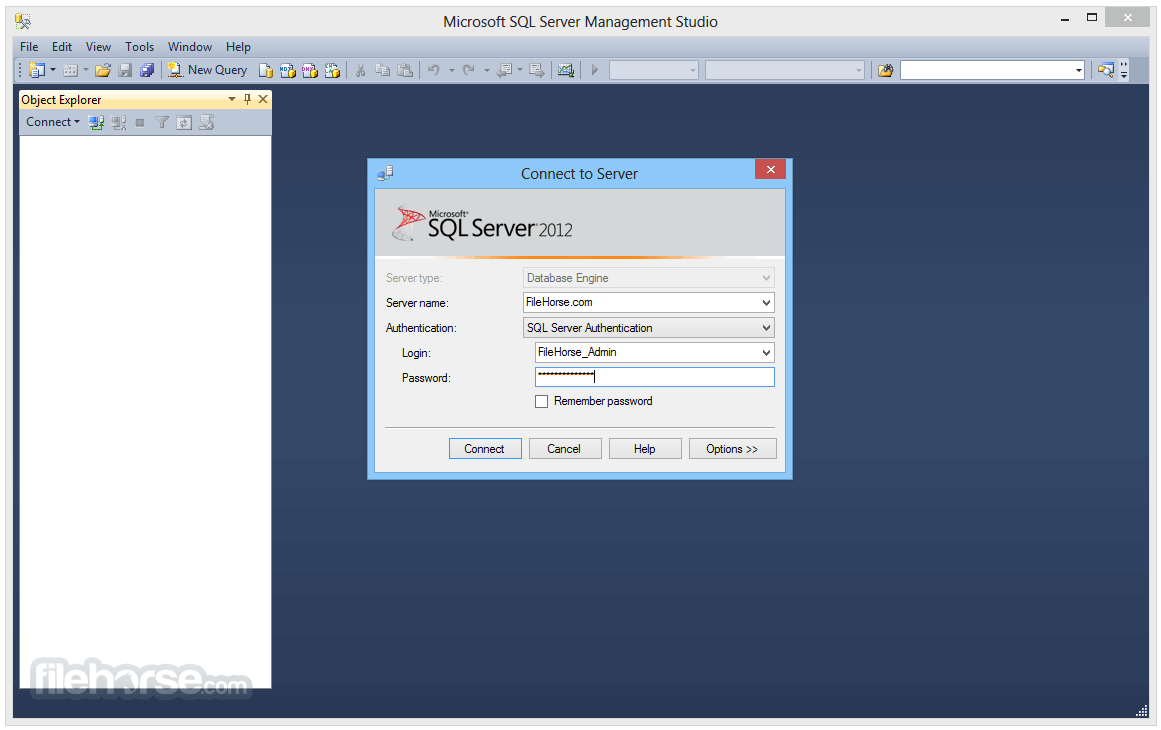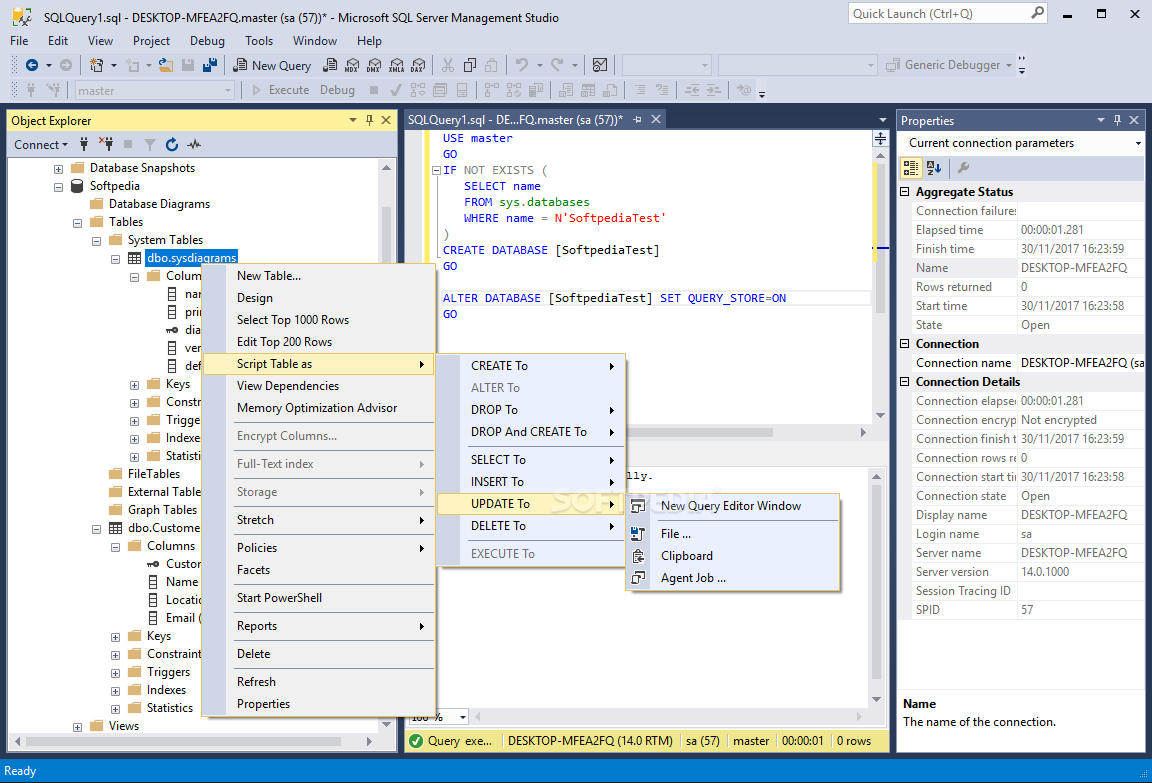

- #Download sql on mac how to
- #Download sql on mac for mac
- #Download sql on mac archive
- #Download sql on mac password
- #Download sql on mac download
(You can better ask to a DBA to review the content of this file and ask her to provide you with a proper test connection) Create a proper tnsnames.ora file to define proper connection stringsĬopy or create a tnsnames.ora file to /Applications/oracle/product/instantclient_64/11.2.0.4.0/network/admin/Ĭreate the tnsnames.ora file with the vi editor, paste the following lines and save it. $ mv *README /Applications/oracle/product/instantclient_64/11.2.0.4.0/ $ mv glogin.sql /Applications/oracle/product/instantclient_64/11.2.0.4.0/sqlplus/admin/ $ mv x*.jar /Applications/oracle/product/instantclient_64/11.2.0.4.0/rdbms/jlib/ $ mv ojdbc* /Applications/oracle/product/instantclient_64/11.2.0.4.0/jdbc/lib/ Next, move the files over to these directories as follows: $ mkdir -p /Applications/oracle/product/instantclient_64/11.2.0.4.0/network/admin $ mkdir -p /Applications/oracle/product/instantclient_64/11.2.0.4.0/sqlplus/admin $ mkdir -p /Applications/oracle/product/instantclient_64/11.2.0.4.0/rdbms/jlib $ mkdir -p /Applications/oracle/product/instantclient_64/11.2.0.4.0/jdbc/lib $ mkdir -p /Applications/oracle/product/instantclient_64/11.2.0.4.0/lib $ mkdir -p /Applications/oracle/product/instantclient_64/11.2.0.4.0/bin Instead, we’ll create a nicely structured directory to keep these files in your user Applications folder.
#Download sql on mac archive
Note: The -qq flag will tell the unzip utility to run in quieter mode, preventing any output from being displayed on the screen.īy default, the archive will extract all these files to a single directory. Open a Terminal window and unzip the downloaded files. Extract the files and create the proper folder structure.
#Download sql on mac download
Download the files from the Oracle SiteĢ.

I just skipped some text and modified some paths to adapt it to oracle client 11.2.0.4 release.ġ.
#Download sql on mac how to
That's all there is to it, you've now installed SQL Server on your Mac! If you knew the Microsoft of the 90's you probably never would have thought it would be so easy to install SQL Server on a Mac and especially on Linux as it is in 2020.The How To has been extracted from the following link: This makes it easier to maintain a list of DB modifications or additions in the mods.sql file for example. Note that we could have done everything from the docker-compose.yml file if we wanted to, but I decided to break it up into scripts.
#Download sql on mac password
It will be listening on port 1401, you can connect to it using SA and the password you set (eg DB_PASS environment variable). Just run the following in terminal from the directory that has your docker-compose.yml file: docker-compose upĪt this point it should boot up SQLServer. If you are not working with a SQL Server backup and just have some SQL create statements, you can just put them in mods.sql and comment out the line of the script that imports the database from a backup. opt/mssql-tools/bin/sqlcmd -S localhost -U SA -P "$MSSQL_SA_PASSWORD" -d ExampleDb -i /tmp/data/mods.sql opt/mssql-tools/bin/sqlcmd -S localhost -U SA -P "$MSSQL_SA_PASSWORD" -Q "RESTORE DATABASE ExampleDb FROM DISK='/tmp/data/myDB.bak' WITH MOVE 'ExampleDb' TO '/var/opt/mssql/data/ExampleDb.mdf', MOVE 'ExampleDb_log' TO '/var/opt/mssql/data/ExampleDb.ldf'" The folder structure looks like this: db/ Now I have a sub folder called db with a few other files. The password for the SA account will be set to the value of my DB_PASS environment variable, you may want to change how that works to suit your needs. The ports section is mapping SQL Server port 1433 to my local port 1401.

Image: microsoft/mssql-server-linux:2017-latestĪ few key points here. Here's a simple docker-compose.yml file for running SQL Server on a Mac. You don't have to use docker-compose but I find it makes the process easy, especially if you leave a project and come back to it 6 months later. We will use docker-compose.yml to make it very easy to start or stop SQL Server on our Mac.
#Download sql on mac for mac
Once you have docker for Mac installed you should be able to run docker-compose -v from Terminal and it should output the version number.ĭocker Compose lets you define one or more servers (or docker containers) in a single YAML file. If you already have docker installed, great news for you, you can skip to the next step.

I never thought this would be so easy, but here's how I've been doing this for the past few years. So you use a Mac, but you need to run Microsoft SQL Server.


 0 kommentar(er)
0 kommentar(er)
